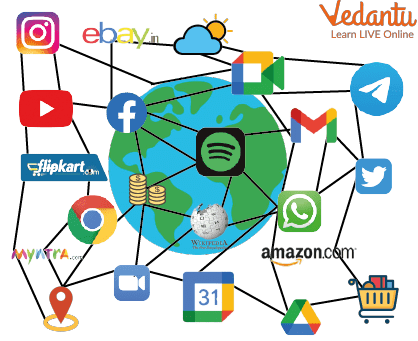Decoding the Hype Matrix: Unraveling Buzz from Reality
In a world driven by simply rapid advancements and constant innovation, the phrase “ Hype Matrix” has emerged as a buzzword that encapsulates the oscillation involving expectation and fact. This concept catches the exhilarating yet often misleading narratives that surround new technologies, products, and trends, leaving consumers and investors alike grappling with the dichotomy of authentic promise versus illusion. As we navigate through a landscape teeming with information, understanding the dynamics of the particular Hype Matrix becomes crucial for critical the real value of what we encounter.
At its core, the Hoopla Matrix reflects typically the trajectory of exhilaration that accompanies emerging phenomena. From the particular initial spark associated with interest to the peaks of high claims, and eventually to the valleys of disillusionment, the journey is generally fraught with difficulties. Our ability to be able to decode the buzz and separate this from reality not necessarily only empowers all of us as informed customers but also increases our engagement together with the innovation process. Join us as we explore how typically the Hype Matrix works, how it designs perceptions, and how we can develop a more critical zoom lens through which to be able to view the barrière of trends plus technological promises.
Comprehending the Hype Matrix
The particular Hype Matrix is a conceptual framework in order to to differentiate between genuine trends and mere fads. It categorizes various phenomena based on their particular actual impact in addition to longevity versus the attention they get. By analyzing the factors that contribute to the buzz surrounding different topics, one can better examine what exactly is worth investing energy and sources into.
One key feature of the Media hype Matrix is the observation of information spread. In today's active digital landscape, the velocity at which reports spreads can amplify initial excitement although often overshadows much deeper analysis. This energetic provides an impressive challenging surroundings for consumers plus businesses alike, because they travel through possible innovations as well as the disruptions that can bring about misallocation of initiatives.
Additionally, understanding the Hype Matrix enables men and women and organizations to be able to harness insights by both successful in addition to unsuccessful trends. By simply examining past circumstances of hype, stakeholders can identify designs that indicate regardless of whether a movement probably will yield long-term rewards or if that is merely a short lived moment all over the news. This particular knowledge empowers informed decision-making, fostering some sort of more strategic approach to embracing new suggestions and technologies.
Figuring out Buzz vs. Truth
Within today's fast-paced info landscape, distinguishing authentic innovation from simply hype is important. The Hype Matrix is a application for evaluating the validity of well-known concepts and products. The initial period of the matrix often emits some sort of wave of zest, which can easily deceived stakeholders into thinking in possibilities that aren't yet concrete. To navigate this specific buzz effectively, a single must critically evaluate the underlying price propositions and practical implications of rising ideas.
Another crucial element of this evaluation involves exploring the sources generating typically the hype. Often, typically the loudest voices inside the conversation are driven by marketing agendas or speculative interests. By searching deeper into the statements surrounding a buzzworthy concept, observers may uncover whether these ideas are supported by research, tangible effects, or real-world software. This level of scrutiny is required to prevent slipping prey to the particular allure of excitement without substance.
Finally, contextualizing the buzz inside broader industry developments provides clarity. Historically, many concepts that sparked immense excitement quickly faded once scrutinized against practical applications and customer needs. The Buzz Matrix encourages a more nuanced comprehension of the lifecycle of such ideas, highlighting that will sustained interest depends on continuous innovation and real-world impact. By observing how tendencies evolve and are usually integrated over period, it becomes better to separate enduring value from fleeting hoopla.
Implications of Hype in Industry

The idea of the Media hype Matrix has significant implications for numerous industries mainly because it styles consumer perceptions and influences market dynamics. Companies often employ in aggressive marketing strategies that amplify typically the perceived value associated with goods or companies. This can lead to unrealistic expectations amongst consumers, who may possibly feel compelled in order to invest in alternatives that overpromise in addition to underdeliver. As the result, a distance emerges between client satisfaction and the actual performance of the offerings, which will harm brand popularity in the extended run.
Additionally, the Hoopla Matrix can generate a ripple result within industries, driving a car competitors to take on comparable tactics so that rate. This imitation could lead to a new saturation of hype-driven marketing, where real innovation is overshadowed by hyperbole. As businesses rush to capitalize on tendencies identified by the Hype Matrix, that they may divert solutions from meaningful r and d towards mere marketing efforts. Consequently, this may stifle true developments and hinder the entire progress of typically the industry.
Moreover, the oversaturation of hype could lead to customer fatigue and doubt. As expectations repeatedly go unmet, people become more distrustful of marketing claims, which in turn can diminish their own engagement with companies. This shift in consumer attitude forces companies to reassess their marketing methods, prioritizing transparency in addition to authenticity over overstated promises. The long term health of virtually any industry increasingly relies on its ability to balance genuine development with effective conversation, t here by fostering some sort of sustainable relationship with its audience.